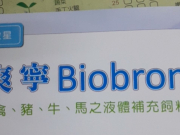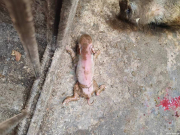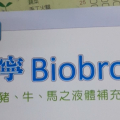|
|
 發表於 2011-10-5 10:52:36
|
顯示全部樓層
發表於 2011-10-5 10:52:36
|
顯示全部樓層
本帖最後由 蘇少儀 於 2011-10-5 19:43 編輯
飼料酸化使用有機酸,較無機酸和緩,嗜口性較佳
價格較高.因此,酸的價格做比較時,是依有機酸的比率而定
Nutrient Requirements of Swine: 10th Revised Edition (1998)
7. Nonnutritive Feed Additives
Nonnutrient feed additives are commonly included in swine diets. Of these, the antimicrobial agents are the additives most commonly used. Antimicrobial agents, along with anthelmintics, are defined as "drugs" by the Food and Drug Administration (FDA). Thus, their usage levels, allowable combinations, and periods of withdrawal prior to slaughter are regulated by the FDA and are published annually in the Feed Additive Compendium (1998). In addition, certain other additives are sometimes included in swine diets. The association of American Feed Control Officials (1998) has established guidelines for the use of many of these products in animal feeds.
Additives
Acidifiers
Citric acid, fumaric acid, or formic acid additions to starter diets have been shown to enhance performance in early-weaned pigs (Kirchgessner and Roth, 1982, 1987; Falkowski and Aherne, 1984; Giesting and Easter, 1985; Burnell et al., 1988; Ravindran and Kornegay, 1993). Inorganic acids, such as phosphoric acid and, in some instances, hydrochloric acid, also have been found to be beneficial to young pig performance (Schoenherr, 1994; Bergstrom et al., 1996; Mahan et al., 1996). The mechanism of action is not clear, but it may be related to a reduction in pH in the upper intestinal tract, thereby reducing the potential for proliferation of undesirable microorganisms in the stomach and small intestine. Organic acids also have been used to preserve high-moisture grains and as mold inhibitors in feeds (Crenshaw et al., 1986). |
|















 IP卡
IP卡 狗仔卡
狗仔卡 [信息未更新]
[信息未更新] 發表於 2008-6-1 17:09:54
發表於 2008-6-1 17:09:54
 提升卡
提升卡 置頂卡
置頂卡 沉默卡
沉默卡 喧囂卡
喧囂卡 變色卡
變色卡 搶沙發
搶沙發 千斤頂
千斤頂 顯身卡
顯身卡 發表於 2010-6-12 18:56:26
發表於 2010-6-12 18:56:26








